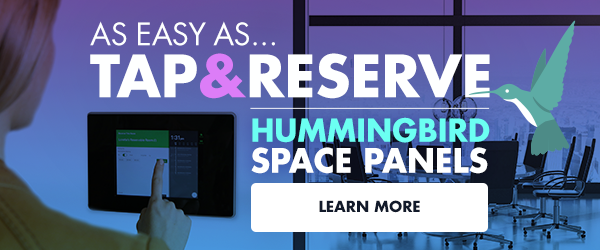How IT Managers Can Overcome Workplace Hurdles And Champion Modernization


Let’s face it, being an information technology (IT) manager today isn’t easy. Not only are you responsible for determining the best technology to use, but you must ensure that it is functioning 24/7 and that employees know how to manage it effectively. What’s more, since changes and upgrades are happening constantly, you need to stay current, making sure the technology you’re using delivers.
Given these monumental tasks, it’s not surprising that many IT managers are hesitant to make changes for fear that they will be opening Pandora’s box. However, by taking the following steps, IT managers can help modernize their workplaces and substantially improve employee experiences.
Create a Digital Task Force
Activity-based working(ABW) has dramatically changed the workplace, as employees now have the freedom and flexibility to do their jobs anyplace that matches their specific tasks and preferred work style. The challenge, however, is that it has upended traditional workplace technology. Employees, accustomed to using advanced technologies in their personal lives, expect the same or better at the office, but many workplace leaders struggle to find solutions that will satisfy everyone.
The workspace of today can no longer be effectively managed through a single, traditional software package, and the IT department alone should not have to manage the constant fluctuating demands of an increasingly digital workplace. Rather, IT must join forces with those in the facilities management, corporate real estate and human resources departments to adopt technology that helps employees across the board work more easily and productively.
Breaking down silos and blurring the lines between applications and departments can help organizations better manage their workspaces and worker experiences.
Counter The Resistance
Even if technological changes are guaranteed to have a positive result, some employees will want to hold on to what they already know because it’s easier, and they may fear that they won’t be able to master the new technology. The best way to combat resistance is to include them in the process well before making the investment. Create an employee task force to solicit their needs and collectively plan both the goals and intended outcomes. Employees are an essential part of communications around new tech deployments.
Discuss the specific ways in which the new technology is better and will help them be more productive while asking them to act as ambassadors and troubleshooters when problems arise — which they will. The task force can be instrumental in recruiting for training programs, adjusting appropriate schedules and acting as a liaison with the IT department for broader assistance.
Keep It Safe
According to a 2017 report by the Identity Theft Resource Center and CyberScout, there were a record high 1,579 data breaches during the last year. IT professionals need to limit access points to protect their systems. Moreover, employees, who demand more access to data and systems from more touch points than ever before need to understand the balance between all access and the threats posed by data breaches, accidental exposure, hacking (including phishing), ransomware/malware and skimming, insider theft and more. Sharing these very real threats within the employee task force are a good compliment to the tech selection process and cyber education that should accompany it.
Manage the Tech Stack
For many businesses, the tech stack has become increasingly complex and overwhelming. A 2016 report (registration required) produced by systems management specialist 1E stated that global enterprise software waste has climbed to a whopping 38%. In fact, one of our customers identified 58 independent workplace apps running on their tech stack alone. By being vigilant about “app creep” and eliminating outdated software, IT managers can close potentially dangerous security backdoors. By increasing communication between departments, chief information officers (CIOs) and chief technology officers (CTOs) can plan for a future that consolidates and shares data and analytics across cloud-based platforms, and more accurately work from the same data for better outcomes.
Prove Your Worth
Since more and more technology has moved to the cloud, software today can be more easily updated and maintained. However, IT still needs to ensure that any new software is benefiting employees and that the cost is worth it. Set time aside for both quantitative and qualitative research on the new tech, like employee satisfaction, increased productivity, rapid training and utilization, to name a few. By gathering comprehensive data, IT can show that newly integrated technology is having a positive impact on employees, making tasks easier and improving workplace productivity.
In the technology world, change—like death and taxes—is guaranteed. Savvy IT leaders must think strategically, working together with the corporate real estate, facilities management and human resources departments to select, introduce, integrate and maintain new technology. This will enable the IT department to overcome the challenges it faces and improve the overall workplace experience for employees.
This post was previously published May 21, 2018 on Forbes.
